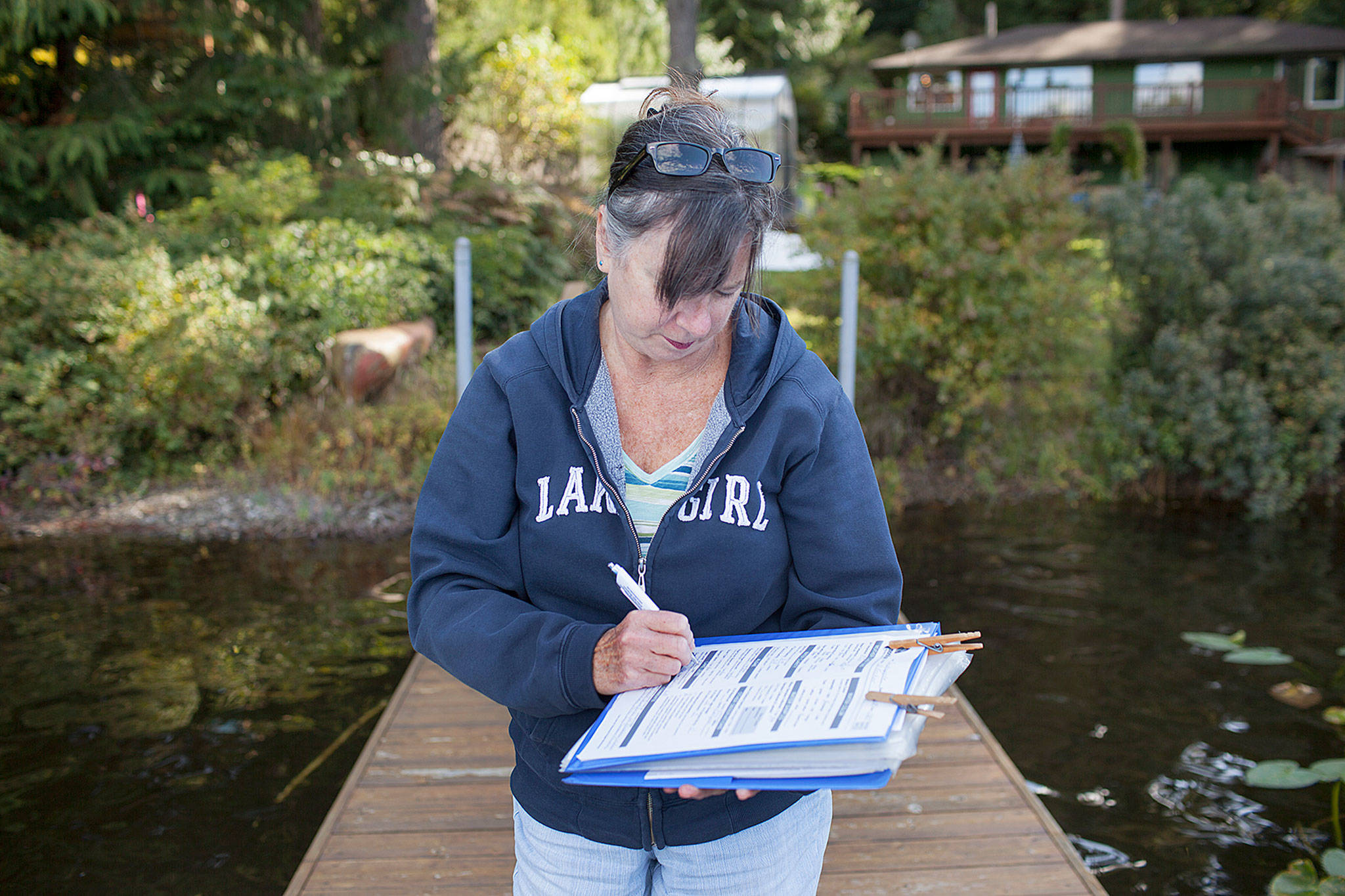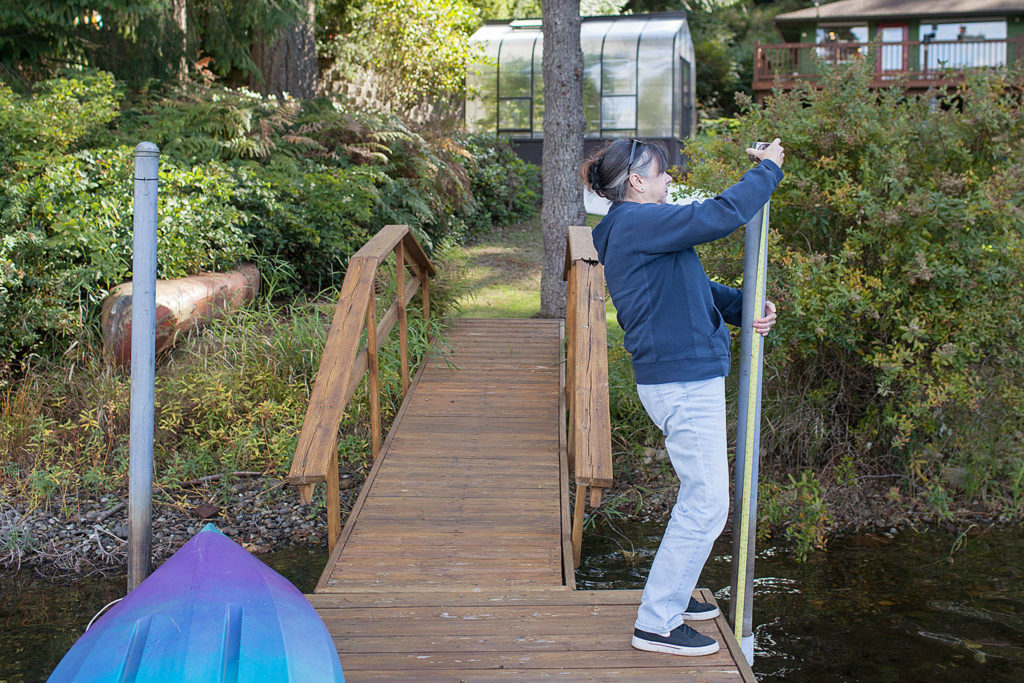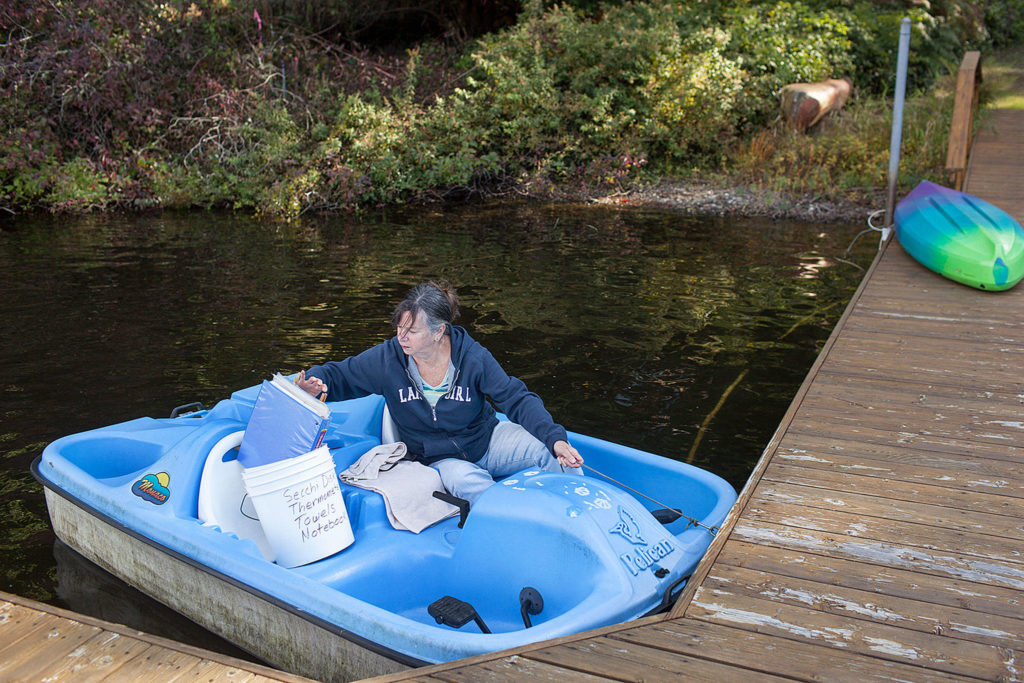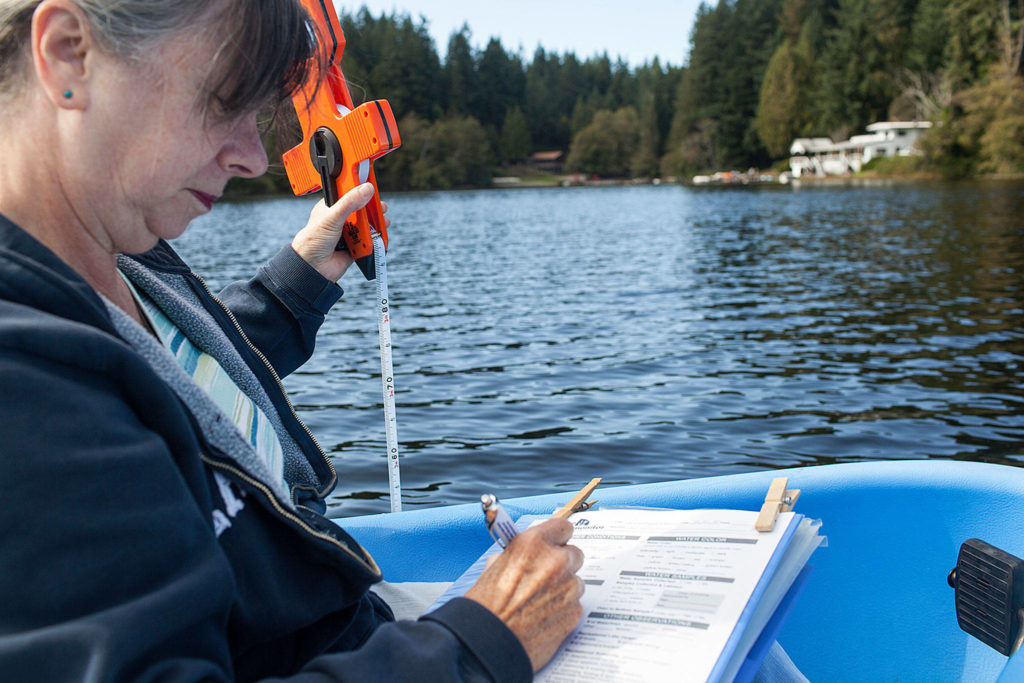LAKE GOODWIN— Not long after Deb Kocher moved to a house along Lake Crabapple, she noticed a massive brown blob filling the lake coming from a stream on the eastern edge.
“I wanted to know what was going on,” said Kocher, a retired small business owner.
She later learned someone had blocked the stream’s mouth and once it was undammed sediment and mud flooded in unchecked.
That observation launched Kocher’s 26-year journey monitoring the 37-acre lake, which sits north of the Tulalip Indian Reservation. Working with a Snohomish County Surface Water Management program, she paddles to the middle of the lake to measure water clarity, temperature, dissolved oxygen and to look for algae blooms twice a month May through October.
Then Kocher heads across to take the first of three water level readings. And once a month over the summer Kocher hauls back water samples, which are picked up by the county and analyzed at a lab.
Kocher is just one of 73 volunteers monitoring 31 lakes through the county’s program. It started in 1992 with a five-year grant as a way to understand the baseline health of the lakes. When funding continued it became a way to track changes over time and watch for potential problems.
Snohomish County is one of the few counties in the state that monitors lakes, said Jen Oden, a water quality specialist for the county.
“Without volunteers it would not be possible to keep tabs on this many lakes,” she said.
The observations are taken over the warmer months when the lake water is stratified and divided into layers.
“It’s the most telling time to understand the lake health,” Oden said.
The data is analyzed and compiled into an annual health report for the lake.
Over the years Kocher has seen big changes.
“When I first moved here I’d see tadpoles from the dock, but don’t see them anymore,” Kocher said. “A great blue heron used to come here to fish every day, but now you are lucky to see it a couple of times of month. The food source is not here for them anymore.”
Without the regular monitoring, she said she might have missed these shifts.
“Some lakes are still in good health, but we’re seeing red flags emerge,” said Marisa Burghdoff, another water quality specialist for the county. “Other lakes, are in poor condition suffering from too much pollution.”
Some volunteers like Kocher tend to stick around for decades. Nancy and Steve Dean, the longest-running monitoring participants, have been collecting data on Lake Martha located in the Seven Lakes area north of the Tulalip Indian Reservation since 1992.
“We haven’t had to do much recruitment,” Burghdoff said. “People who live on their lakes want to protect their resources.”
Volunteers have helped catch algae blooms and invasive species early.
At Echo Lake near Maltby, monitors spotted Australian water clover near the boat launch in 2010. The beautiful but aggressive plant can spread rapidly. The early detection aided in the eradication of the invasive species, Burghdoff said.
“Volunteers are the eyes and ears, they see everything first,” she said.
Lizz Giordano: 425-374-4165; egiordano@heraldnet.com; Twitter: @lizzgior.
To learn more about the program or volunteer visit www.lakes.surfacewater.info.
Talk to us
> Give us your news tips.
> Send us a letter to the editor.
> More Herald contact information.




























